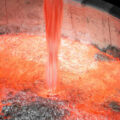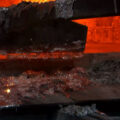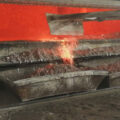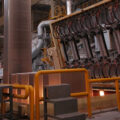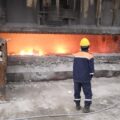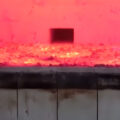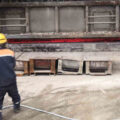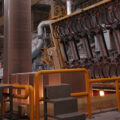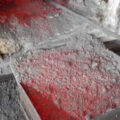Aluminum alloy refining process is an important step in aluminum alloy casting. Flux refining is usually used in the furnace.
According to the crucible smelting and the weight of the charge, the charge, alloy ingot, intermediate alloy, and pure metal are added to the crucible one after another or at the same time and heated to melt. When adding magnesium, use the bell jar to press the magnesium block into the lower part of the alloy liquid, rotate it slowly, and stir evenly, and take out the bell jar after all the magnesium is melted.
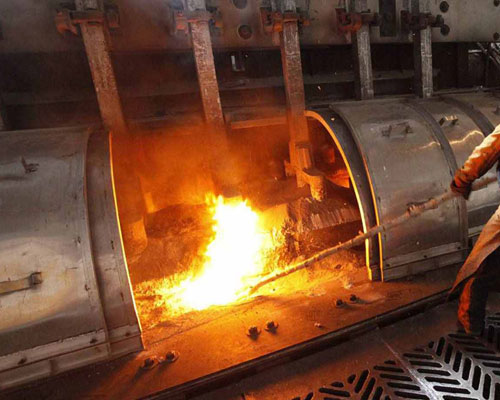
Aluminum Alloy Refining Process
After the charge is completely melted, when the alloy liquid temperature reaches 690~740℃, use the bell jar to press the refining agent into the alloy liquid in 2~3 batches, 10~15cm from the bottom of the crucible, and rotate slowly and evenly until the reaction stops Take out the bell jar. When the weather is humid or the amount of reheating material is large, the upper limit of the amount of refining agent added, the specific amount of addition depends on the refining effect.
After aluminum alloy refining process, let it stand for 10-20 minutes, then remove the slag on the surface of the alloy liquid, and then transfer the alloy liquid to the holding furnace or directly cast. During the entire smelting and pouring process, the temperature of the alloy liquid should not be too high, nor should it exceed 750°C in a short time.
The melting and pouring time of the alloy should be shortened as much as possible, and it should not exceed 8h from the beginning of the melting of the alloy to the completion of pouring.
The residence time of the alloy liquid after refining shall not exceed 4h for casting or die casting, otherwise, it shall be supplemented with refining.
The refining temperature is the same as the pouring temperature. The amount of refining agent is 0.2-0.4% of the remaining alloy liquid weight. When refining magnesium-containing aluminum alloys, the amount of magnesium loss should also be added.
In the pouring process, do not add the remaining material of the gate or waste castings into the alloy liquid at will, otherwise, it should be refined again.
When the depth of the remaining alloy liquid at the bottom of the crucible is less than 50mm, no more castings can be poured, but it can be continuously smelted by adding charge, or pour new alloy liquid.
During the entire smelting process, it is necessary to minimize the damage to the oxide scale on the surface of the alloy liquid. When scooping the alloy liquid, the oxide scale should be stripped first to avoid putting the oxide belt into the alloy liquid.

